3
Key Terms
| International Trade | Voluntary exchange | Comparative Advantage |
| Imports | Exports | Trade barriers |
| Quota | Tariff | Subsidy |
| Embargo | Protectionism | Free trade |
| Fair trade | Economic growth | World Trade Organization (WTO) |
| International Monetary Fund (IMF) | World Bank |
Learning Targets
3.1 I can explain why countries trade using the concept of comparative advantage.
3.2 I can analyze the impact of free trade and trade barriers on foreign and domestic markets.
3.3 I can identify the effects of globalization, and analyze the positive and negative consequences.
3.4 I can identify major international economic institutions (WTO, IMF, and World Bank) and evaluate their role in global trade and economic development.
We live in a global marketplace. The food on your table might include fresh fruit from Chile, cheese from France, and bottled water from Scotland. Your wireless phone might have been made in Taiwan or Korea. The clothes you wear might be designed in Italy and manufactured in China. The toys you give to a child might have come from India. The car you drive might come from Japan, Germany, or Korea. The gasoline in the tank might be refined from crude oil from Saudi Arabia, Mexico, or Nigeria. As a worker, if your job is involved with farming, machinery, airplanes, cars, scientific instruments, or many other technology-related industries, the odds are good that a hearty proportion of the sales of your employer—and hence the money that pays your salary—comes from export sales. We are all linked by international trade, and the volume of that trade has grown dramatically in the last few decades.
As the world has become more globally connected, firms and workers in high-income countries like the United States, Japan, or the nations of the European Union, perceive a competitive threat from firms in medium-income countries like Mexico, China, or South Africa, that have lower costs of living and therefore pay lower wages. On the other hand, firms and workers in low-income countries fear that they will suffer if they must compete against more productive workers and advanced technology in high-income countries.
On a different tack, some environmentalists worry that multinational firms may evade environmental protection laws by moving their production to countries with loose or nonexistent pollution standards, trading a clean environment for jobs. Some politicians worry that their country may become overly dependent on key imported products, like oil, which in a time of war could threaten national security. All of these fears influence governments to reach the same basic policy conclusion: to protect national interests, whether businesses, jobs, or security, imports of foreign products should be restricted. In this unit we will analyze such arguments.
Trade and Comparative Advantage
The American statesman Benjamin Franklin (1706–1790) once wrote: “No nation was ever ruined by trade.” Many economists would express their attitudes toward international trade in an even more positive manner. The evidence that international trade confers overall benefits to economies is pretty strong. When nations trade, both perceive a benefit making the transaction a voluntary exchange. Trade has accompanied economic growth in the United States and around the world. Many of the national economies that have shown the most rapid growth in the last few decades—for example, Japan, South Korea, China, and India—have done so by dramatically orienting their economies toward international trade. There is no modern example of a country that has shut itself off from world trade and yet prospered. To understand the benefits of trade, or why we trade in the first place, we need to understand the concepts of comparative and absolute advantage.
A country has an absolute advantage in producing a good over another country if it uses fewer resources to produce that good. Absolute advantage can be the result of a country’s natural resources. For example, extracting oil in Saudi Arabia is pretty much just a matter of “drilling a hole.” Producing oil in other countries can require considerable exploration and costly technologies for drilling and extraction—if they have any oil at all. The United States has some of the richest farmland in the world, making it easier to grow corn and wheat than in many other countries. Guatemala and Colombia have climates especially suited for growing coffee. Chile and Zambia have some of the world’s richest copper mines. As some have argued, “geography is destiny.” Chile will provide copper and Guatemala will produce coffee, and they will trade. When each country has a product others need and it can be produced with fewer resources in one country over another, then it is easy to imagine all parties benefitting from trade. However, thinking about trade just in terms of geography and absolute advantage is incomplete. Trade really occurs because of comparative advantage.
A country has a comparative advantage when a good can be produced at a lower cost in terms of other goods. The question each country or company should be asking when it trades is this: “What do we give up to produce this good?” For example, if Zambia focuses its resources on producing copper, its labor, land and financial resources cannot be used to produce other goods such as corn. As a result, Zambia gives up the opportunity to produce corn. How do we quantify the cost in terms of other goods? Simplify the problem and assume that Zambia just needs labor to produce copper and corn. The companies that produce either copper or corn tell you that it takes 10 hours to mine a ton of copper and 20 hours to harvest a bushel of corn. This means the opportunity cost of producing a ton of copper is 2 bushels of corn.
If each country specializes in its comparative advantage, it will benefit from trade, and total global output will increase. Specialization requires countries to both export and import goods leading to an increase in total world production.
Free Trade and Trade Barriers
In spite of the strong theoretical case that can be made for free international trade, every country in the world has erected at least some barriers to trade. Trade barriers are typically undertaken in an effort to protect companies and workers in the home economy from competition by foreign firms. Protectionism is when a country restricts the importation of goods and services produced in foreign countries to protect domestic interests.
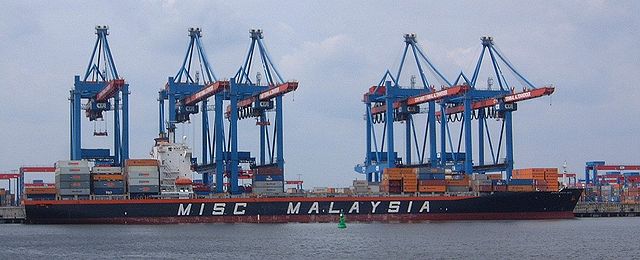
A tariff is a tax on imported goods and services. A tariff raises the cost of selling imported goods. It decreases the supply of goods and the price of the protected good rises and the quantity available to consumers falls. When foreign goods are more expensive, domestic goods become cheaper (or at least more comparable) and better able to compete with foreign producers.
A quota is a direct restriction on the total quantity of a good or service that may be imported during a specified period. Quotas restrict total supply and therefore increase the domestic price of the good or service on which they are imposed. Quotas generally specify that an exporting country’s share of a domestic market may not exceed a certain limit. In some cases, quotas are set to raise the domestic price to a particular level. An important distinction between quotas and tariffs is that quotas do not increase costs to foreign producers; tariffs do. In the short run, a tariff will reduce the profits of foreign exporters of a good or service. A quota, however, raises price, but not costs of production and thus may increase profits.
A subsidy is a form of financial aid or support, usually provided by the government and come in various forms including: direct (cash grants, interest-free loans) and indirect (tax breaks, insurance, low-interest loans). A production subsidy encourages suppliers to increase the output of a particular product by partially offsetting the production costs or losses. The objective of production subsidies is to expand production of a particular product more so that the market would promote but without raising the final price to consumers. This type of subsidy is predominantly found in developed markets. Subsidies targeted at goods in one country, by lowering the price of those goods, make them more competitive against foreign goods, thereby reducing foreign competition. As a result, many developing countries cannot engage in foreign trade, and receive lower prices for their products in the global market.
In addition to tariffs, quotas, and subsidies, measures such as safety standards, labeling requirements, pollution controls, and quality restrictions all may have the effect of restricting imports. Many restrictions aimed at protecting consumers in the domestic market create barriers as a purely unintended, and probably desirable, side effect. For example, limitations on insecticide levels in foods are often more stringent in the United States than in other countries. These standards tend to discourage the import of foreign goods, but their primary purpose appears to be to protect consumers from harmful chemicals, not to restrict trade.
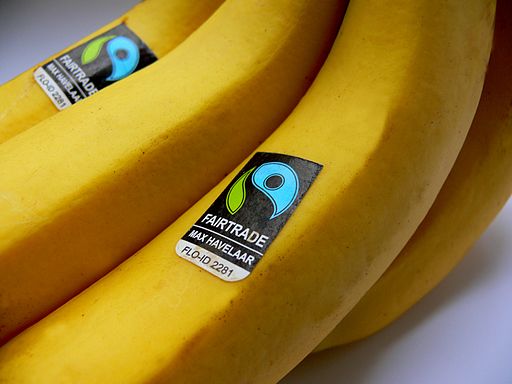
Fair trade is a social movement whose stated goal is to help producers in developing countries achieve better trading conditions and to promote sustainability. Members of the movement advocate the payment of higher prices to exporters, as well as improved social and environmental standards. The movement focuses in particular on commodities, or products, which are typically exported from developing countries to developed countries. Fair trade members argue that the World trade practices that currently exist promote the unequal distribution of wealth between nations. Buying products from producers in developing countries at a fair price is a more efficient way of promoting sustainable development than traditional charity or foreign aid.
Positive and Negative Effects of Globalization
Globalization is the process of becoming more interconnected in world views, products, ideas and other aspects of culture. Advances in transportation (such as the steam locomotive, jet engine, and container ships) and in telecommunications (such as the telephone, internet, and mobile phones) have been major factors in globalization, generating further interdependence of economic and cultural activities.
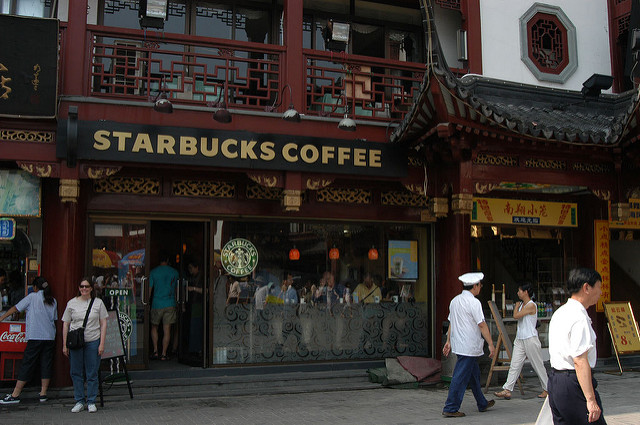
According to the International Monetary Fund (IMF), growth benefits of economic globalization are widely shared. Globalization has radically increased incomes and economic growth in developing countries and lowered consumer prices in developed countries. Poverty has been reduced and per capita income gap between the rich and the globalizing nations has narrowed. Countries like China, India, and Bangladesh, once among the poorest countries in the world, have greatly narrowed inequality due to their economic expansion.
Even though benefits of economic growth have been widespread, globalization also changes the power balance between developing and developed countries and affects the culture of each affected country. Critics argue that globalization has primarily benefited the wealthy and multinational corporations by allowing them to use cheaper labor in poorer societies to manufacture products. Wealthier nations exploit resources by purchasing or leasing land at extremely discounted rates in poor countries and owning their mineral rights. After the extraction of all minerals and materials is complete and all that is left is polluted land, many leave without providing any help to the locals in regards to decontaminating the affected lands or areas. As regards the cheap laborers, many are working in substandard conditions with few if any real safety regulations or protections.
International Economic Institutions
Globalization and the interconnectedness of the world have led to a need for organizing and managing trade and its related issues that arise. International economic institutions have evolved as a way to create a framework to manage and assist countries in trade-related issues.
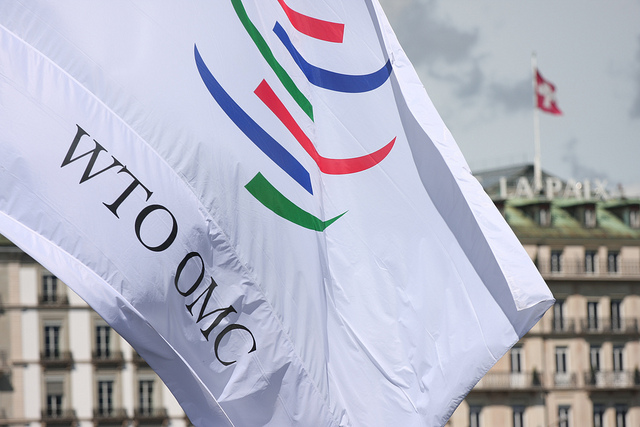
The World Trade Organization (WTO) is an intergovernmental organization which regulates international trade. The WTO’s predecessor, the General Agreement on Tariffs and Trade (GATT), was established after World War II along with other new multilateral institutions working towards international economic cooperation – notably the Bretton Woods institutions known as the World Bank and the International Monetary Fund. The WTO officially commenced on January 1,1995 and was signed by 123 nations. The WTO deals with regulation of trade between participating countries by providing a framework for negotiating trade agreements and a dispute resolution process aimed at enforcing participants’ adherence to WTO agreements. The WTO headquarters is located in Geneva, Switzerland.
The International Monetary Fund (IMF), headquartered in Washington, D.C., is an international organization of 189 countries working to foster global monetary cooperation, secure financial stability, facilitate international trade, promote high employment and sustainable economic growth, and reduce poverty around the world. Formed in 1944 at the Bretton Woods Conference, it came into formal existence in 1945 with 29 member countries with the goal of reconstructing the international payment system. It now plays a central role in the management of balance of payments difficulties and international financial crises. Countries contribute funds to a pool through a quota system from which countries experiencing balance of payments problems can borrow money.
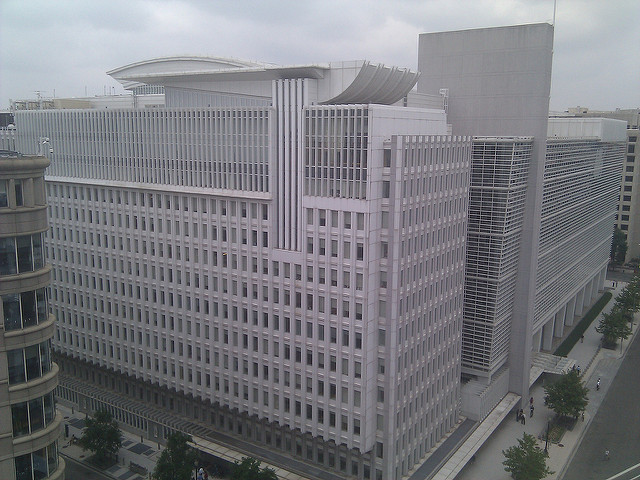
The World Bank is an international financial institution that provides loans to developing countries for capital programs such as roads, dams, and telecommunications structures. The World Bank was also formed in 1944 at the Bretton Woods Conference as a means for countries to access money. Today, the bank’s assistance plans are based on poverty reduction strategies aimed at the poorest developing countries in the world. The World Bank develops a strategy pertaining uniquely to the country in question after an extensive analysis of the country’s financial and economic situation. The government then identifies the country’s priorities and targets for the reduction of poverty, and the World Bank aligns its aid efforts accordingly.
Links to Resources
Current Events
International Economic Institutions IMF website
http://www.imf.org/external/index.htm
A brief overview of the IMF (video)
https://www.youtube.com/watch?v=gmf4ED0eCqc
World Bank Group website
WTO website
Trade
WTO Trade Statistics. Quantitative information in relation to economic and trade policy issues. Databases and publications provide access to data on trade flows, tariffs, and non-tariff measures
https://www.wto.org/english/res_e/statis_e/statis_e.htm
Fair Trade; website on the history of fair trade, fair trade goods, and current research and campaigns
